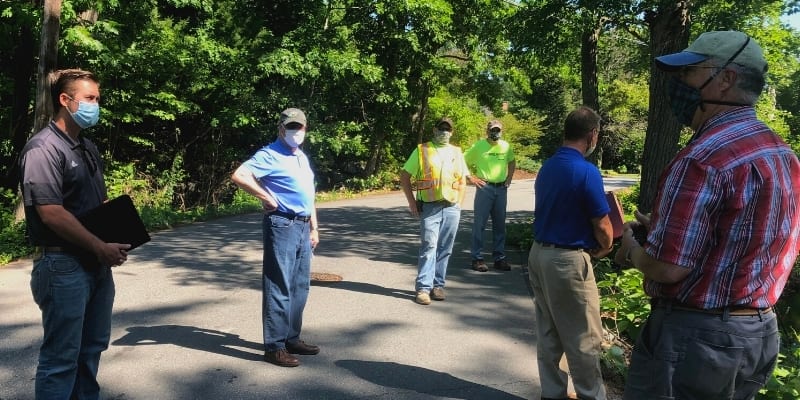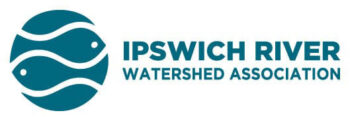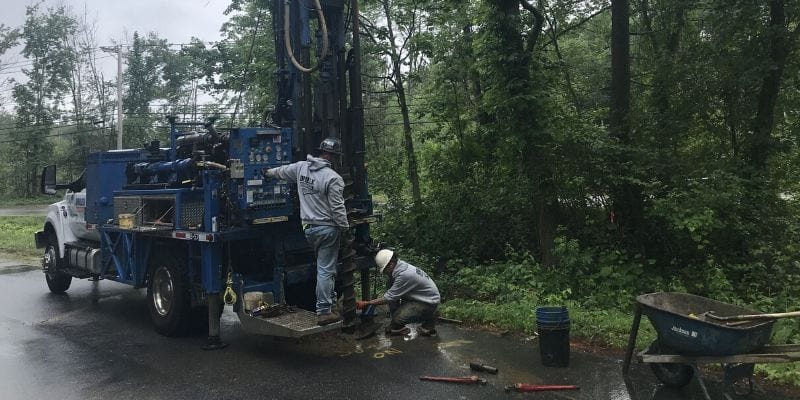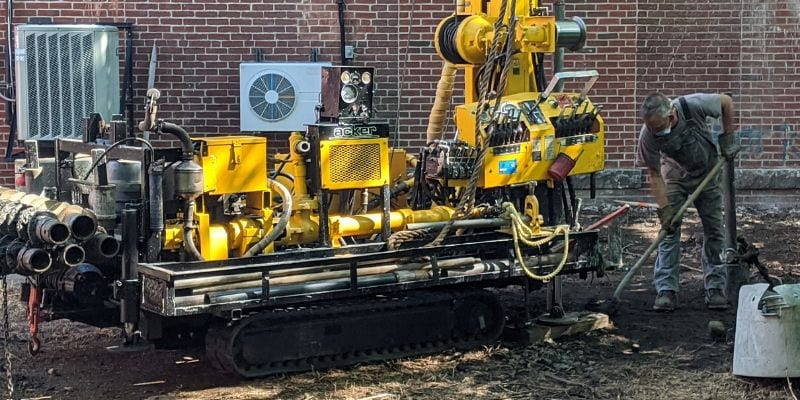
Project partners & consultants from The Engineering Corp, Trout Unlimited Nor’East, the Town of Topsfield and Bay Colony Group met at Pond St in Topsfield to mark boring locations. Not shown: Geotechnical consultants John Turner Consulting and Ipswich River Watershed Association.
The past month has been an exciting one, in terms of making progress on our river restoration projects. First, project partner the Division of Ecological Restoration (DER) was able to fund additional work at the EBSCO property in downtown Ipswich. In June, Carr-Dee completed the installation of water level monitoring wells. These wells are necessary to understand how groundwater is flowing underneath nearby buildings as it travels towards the Ipswich River. The well cap can be opened and a device called a Water Level Meter is used to measure the depth to groundwater. While additional community input will be required prior to a dam removal project moving forward, this is a great step towards understanding what, if any, mitigation is required. Within the month, the sub-surface building investigation report will be finalized, which will further inform funding proposals for the design phase of dam removal.
Drilex Environmental, under guidance from Geotechnical consultant JTC Engineering, uses a drill rig at Pond St in Topsfield to investigate subsurface soil conditions. This information will be used to determine an appropriate replacement structure.
Second, as part of the Howlett Brook Watershed Restoration Project, geotechnical investigations were performed at Pond Street in Topsfield to inform engineering designs for the replacement structure. This multi-year project, funded through the National Fish and Wildlife Foundation and Municipal Vulnerability Preparedness Program aims to restore migratory fish to Hood Pond through designing and upgrading undersized structures throughout the watershed. There is a straightforward process that must be followed to ensure all necessary data is collected to inform a culvert upgrade project. The Division of Ecological Restoration has put together a number of useful guidelines for culvert projects that meet the Massachusetts Stream Crossing Standards. First site reconnaissance must be performed, which includes topographical and stream surveys as well as wetland delineations. The resulting product is an existing conditions plan. Currently our partner’s at Trout Unlimited Nor’East are in the process of generating this plan. Next, a geotechnical evaluation and soil borings report is developed.
Carr-Dee Test Boring and Construction install groundwater monitoring wells on the South end of the riverside EBSCO building. Monitoring these wells will help determine water levels and flows beneath the riverside building.
Prior to the soil borings, project partners from Trout Unlimited Nor’East and the Town of Topsfield, along with myself met with geotechnical, hydraulic and engineering consultants to mark the locations for boring cores to be performed and Digsafe approval. The machines look similar, but the first boring activity served to install a well, while this investigation included sampling the sediment to understand the type of soils present. The wetlands delineation, existing conditions plan and geotechnical boring report along with the hydraulic and hydrologic report will be used by engineers to design an appropriate replacement structure, which is the next phase of this project.


